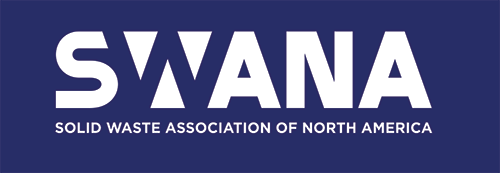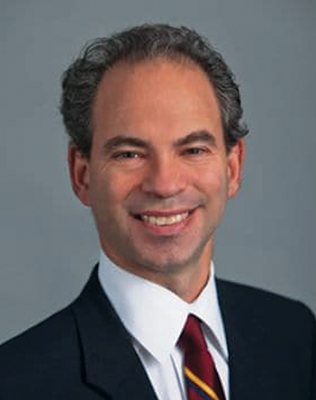Giving his insights on what is going on with recycling, PFAS, recruiting, and more, David Biderman believes that while the industry is on an important path, we should also look toward developing the next generation of waste and recycling industry professionals.

 When China enacted their National Sword policy in 2018, the industry had to make a big adjustment. How have things transitioned with regards to that in the last four years? The future for recycling in the U.S. is far brighter now than it was when China implemented National Sword. This is for several reasons. First, the value of discarded materials is much higher now. For example, the value of a ton of recycled cardboard is currently about $130/ton compared to $30/ton in late 2019. Many of the communities that suspended curbside recycling services in 2018 to 2019 have restored the service. Second, dozens of new paper mills have been constructed in North America, which creates more demand for the recovered paper. Third, consumer-facing companies are increasing the recycled content of their products and containers. Finally, EPA has issued a National Recycling Strategy and Congress has passed legislation providing millions of dollars in funding to support recycling. SWANA will be supporting the implementation of the National Recycling Strategy and is urging EPA to expedite the distribution of the recycling funds authorized in fall 2021.
When China enacted their National Sword policy in 2018, the industry had to make a big adjustment. How have things transitioned with regards to that in the last four years? The future for recycling in the U.S. is far brighter now than it was when China implemented National Sword. This is for several reasons. First, the value of discarded materials is much higher now. For example, the value of a ton of recycled cardboard is currently about $130/ton compared to $30/ton in late 2019. Many of the communities that suspended curbside recycling services in 2018 to 2019 have restored the service. Second, dozens of new paper mills have been constructed in North America, which creates more demand for the recovered paper. Third, consumer-facing companies are increasing the recycled content of their products and containers. Finally, EPA has issued a National Recycling Strategy and Congress has passed legislation providing millions of dollars in funding to support recycling. SWANA will be supporting the implementation of the National Recycling Strategy and is urging EPA to expedite the distribution of the recycling funds authorized in fall 2021.
Considering the ongoing conflict in the Ukraine/Russia, how has this affected the industry directly in terms of pricing and supply chain? The dramatic increase in the cost of fuel in the first few months of 2022 can be directly attributed to Russia’s invasion of Ukraine. This is having some impact on the bottom line of companies and is affecting municipal budgets, and often cannot immediately pass along higher costs to their customers. Whether there will be any long-term impacts will depend upon whether fuel prices decline later this year, which is difficult to predict.
How is SWANA involved in the EPA national strategy and PFAS regulations? How have they helped to guide the upcoming changes? Along with other associations, SWANA has been urging EPA to exempt solid waste landfills from a potential Superfund regulation that would designate two PFAS compounds as hazardous substances. Such regulation could make landfills jointly and severely liable for PFAS discharges by wastewater treatment facilities going back decades. Landfills did not manufacture PFAS, nor did they use them in consumer goods such as Teflon, clothing, and cosmetics. Landfills receive discarded materials that contained PFAS while providing an essential service to communities across the U.S. They should not be liable under Superfund as a result.
Environmental justice is a growing focus. Why is this important for the industry and how can companies implement policies around this? Solid waste disposal facilities are often located in or near low-income neighborhoods, including those largely populated by Blacks or Hispanics. This helps make the solid waste industry a target for environmental justice advocates. The industry needs to continue to demonstrate the minimal impacts its facilities have on surrounding neighborhoods. For example, companies and agencies should describe the extensive environmental measures such as emissions and odor controls that are used at landfills, transfer stations, and waste-to-energy facilities.
How is SWANA working with international associations to help them manage waste and recycling? SWANA is working with a growing number of international organizations to help developing nations better manage their waste and recycling. For example, the Inter-American Development Bank (IDB) has asked SWANA to write reports identifying technological advances in solid waste collection that are being used in the U.S. that might be applicable in Latin America. We are also having discussions about replicating SWANA’s very successful 2020 training for Colombian landfill operators in another Latin American country. We continue to work closely with the International Solid Waste Association (ISWA) in several areas. In fact, an ISWA leader provided an update on ISWA’s “Close the Dumpsites” effort at SOAR in Kansas City this past March.
How is SWANA working on getting the industry off the 10 most dangerous jobs list? SWANA continues to expand its safety resources in our effort to get solid waste collection workers off the list of the 10 most dangerous jobs in the U.S.. For example, we started a new weekly safety newsletter in 2021 and are starting a new Alliance with OSHA in Spring 2022. SWANA data suggests that in 2021, there was a 46 percent decline in worker fatalities compared to 2020. If confirmed by federal data in December, this would be a very significant development and an important milestone towards SWANA’s goal.
What kind of strategies can the industry take on recruiting and training the next generation of waste and reycling industry professionals? The industry is placing a greater emphasis on recruiting, retaining, and training the next generation of solid waste workers and leaders. The pandemic revealed that many front-line workers are not willing to drive a garbage truck or throw trash in the back of that truck for $12 or $13 per hour. Solid waste employers need to raise wages and provide a path towards promotion for their employees.
SWANA also believes that training these individuals is critically important. SWANA recently updated its MOLO certification course for landfill managers and held its first “Young Professionals Leadership Academy”, providing selected members with a two-day curriculum filled with useful insights and advice from experienced industry leaders. It is a fiercely competitive workplace, and smart companies and agencies are taking the steps they need to take to attract new drivers, helpers, mechanics, supervisors, and managers. | WA
David Biderman is SWANA’s Executive Director and CEO and can be reached at [email protected]. For more information, visit https://swana.org.
